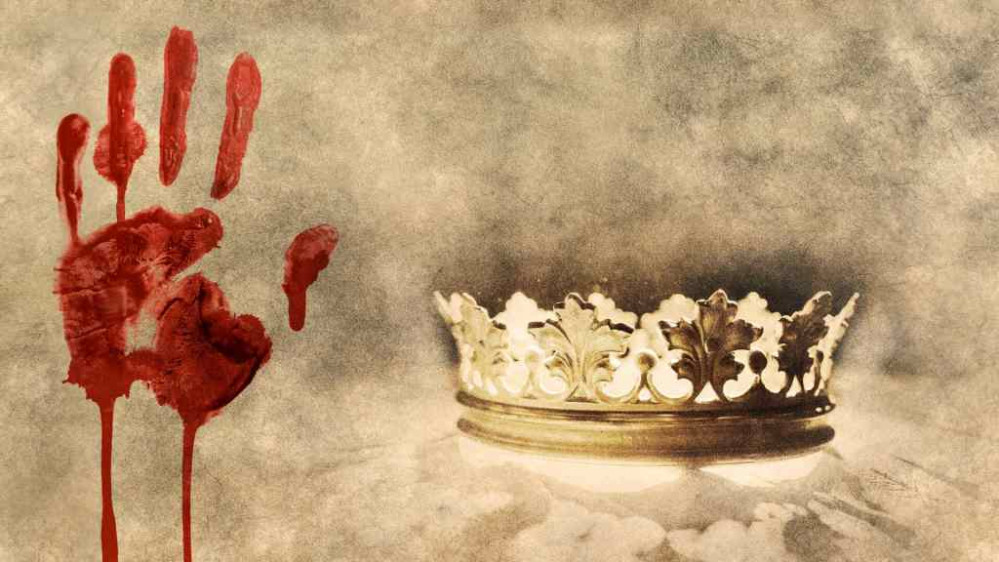
Something wicked this way comes.
ACT II
Scene I - The Existing Miniatures
It was only after I started this project that I decided to create this project so I don’t have as many images of the original army as I would like.
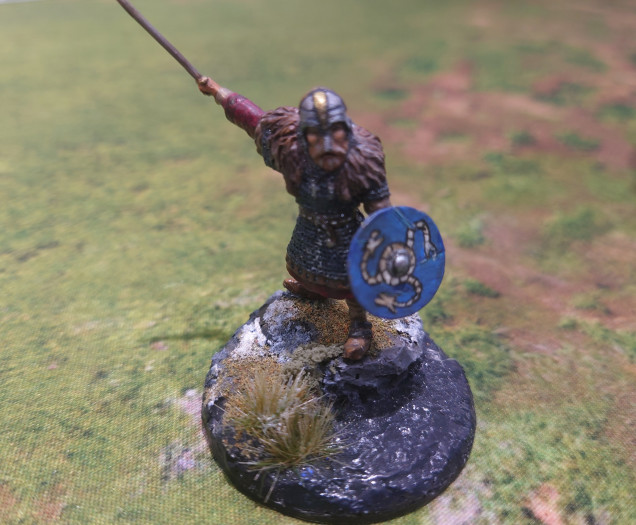 King Macbeth - he has been repaired as originally, he had an axe rather than a sword, but in the intervening years his hand broke off and got lost.
King Macbeth - he has been repaired as originally, he had an axe rather than a sword, but in the intervening years his hand broke off and got lost. These figures are Gripping Beast metals part of the Scottish 6 Point Warband for Saga.
The Commander was painted up and based using traditional painting methods, The main figures were painted using the Army Painter Method of Base colours then dipped followed by a matt varnish. They were then left at like that. The entire warband did not take a long time to paint.
Scene II - Rebasing
The first thing I needed to do was to figure out how to use them in MeG. The Saga figures were all individually based. In 25/28mm MeG the basing convention is as follows:
- Base width is 6cm (60mm)
- Infantry bases are 3cm (30mm) deep
- Cavalry bases are 4.5cm (45mm) deep
- Command bases are 6cm x 6 cm (60mm x 60mm)
- Close Troops are four figures to a base
- Loose Troops are 3 figures to a base
- Cavalry are usually 3 figures to a base
- Skirmish troops are 2 figures to a base
As all the figures were based on 25mm round bases they were not going to all fit onto the MeG bases, yes, I could have gone for sabots, but I am not a big fan of these types of bases.
Scene III - Refreshing the painting
So as previously mentioned the paint scheme used on the figures was following the army painter method. However, I stopped at the point of adding the matt varnish. There is a further step that can be done and that is highlighting the figures. So as I am in the process of rebasing, I thought I would also give the figures some highlights just to make them pop a bit.
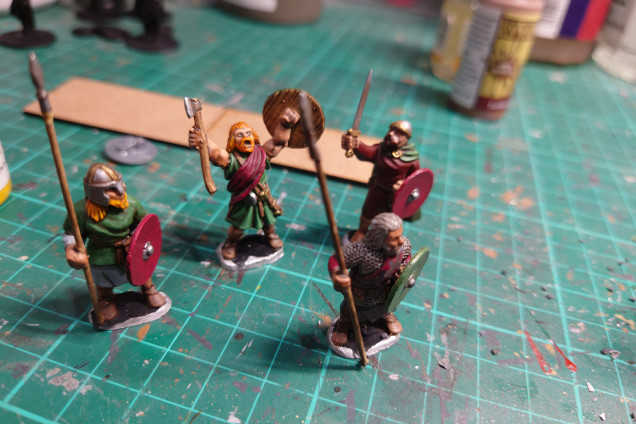 This is the start of the process i have added a few highlights which involves going back to the original base colour and using this to add highlights, i have also added a further highlight by lightening up the base colour. The fortunate thing is that when painting these up originally the base colours were very limited and army painter spray cans for which i have the paints, mostly Red, Yellow, Leather Brown, Plate mail, ultramarine blue and goblin green so easy to do quickly. These figures still have their eyes to be sorted out.
This is the start of the process i have added a few highlights which involves going back to the original base colour and using this to add highlights, i have also added a further highlight by lightening up the base colour. The fortunate thing is that when painting these up originally the base colours were very limited and army painter spray cans for which i have the paints, mostly Red, Yellow, Leather Brown, Plate mail, ultramarine blue and goblin green so easy to do quickly. These figures still have their eyes to be sorted out.In addition to refurbishing the figures I also had to replace some lost weapons and shields and some bows on the archers. Fortunately, I had a few spares knocking around. the hardest was Macbeth himself as his hand had dissapeared along with the weapon. this was fixed by taking a sword arm from a spare plastic sprue and cutting it down to fit.































![TerrainFest 2024 Begins! Build Terrain With OnTableTop & Win A £300 Prize! [Extended!]](https://images.beastsofwar.com/2024/10/TerrainFEST-2024-Social-Media-Post-Square-225-127.jpg)









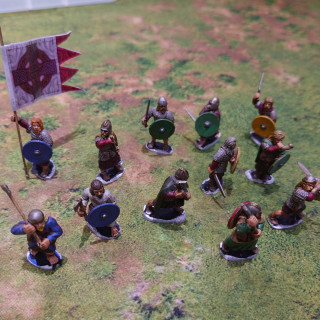
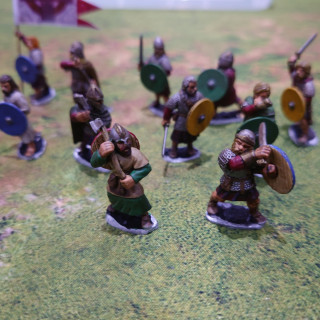
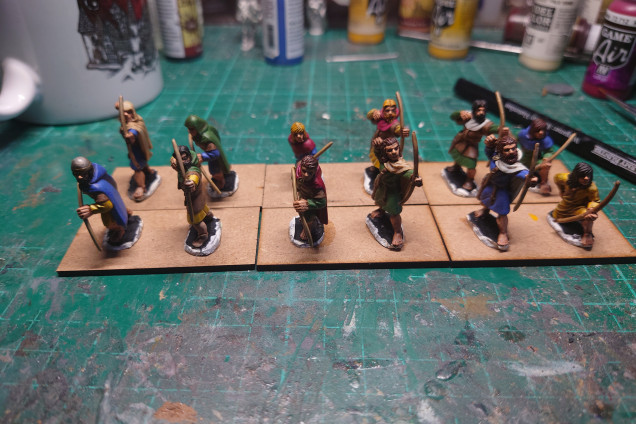

































Leave a Reply